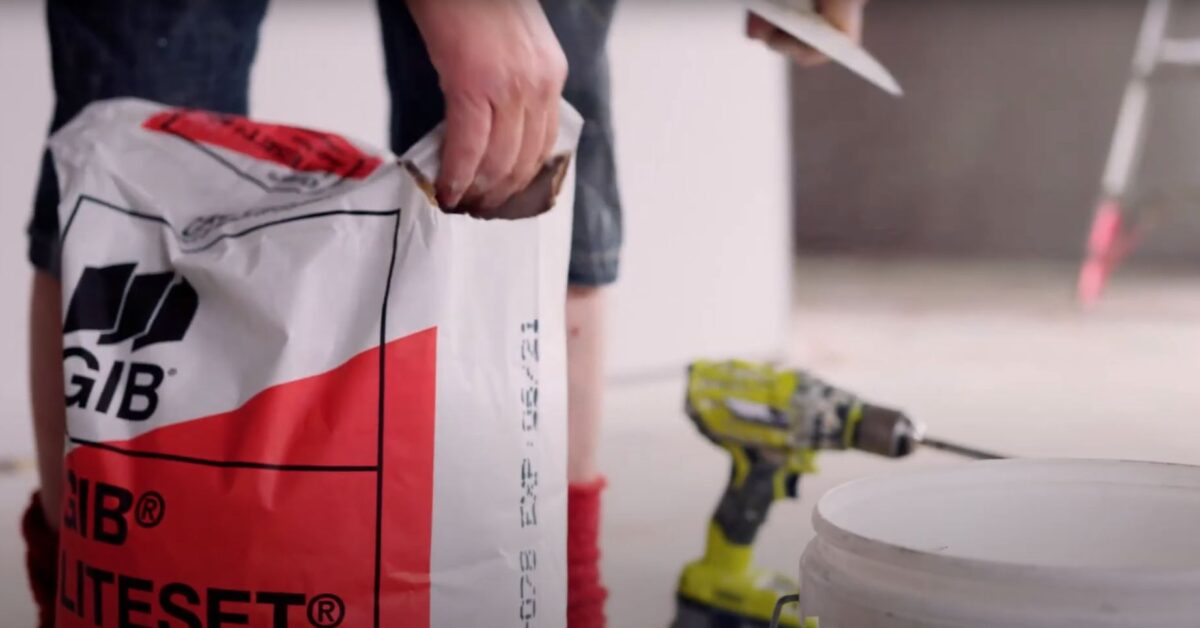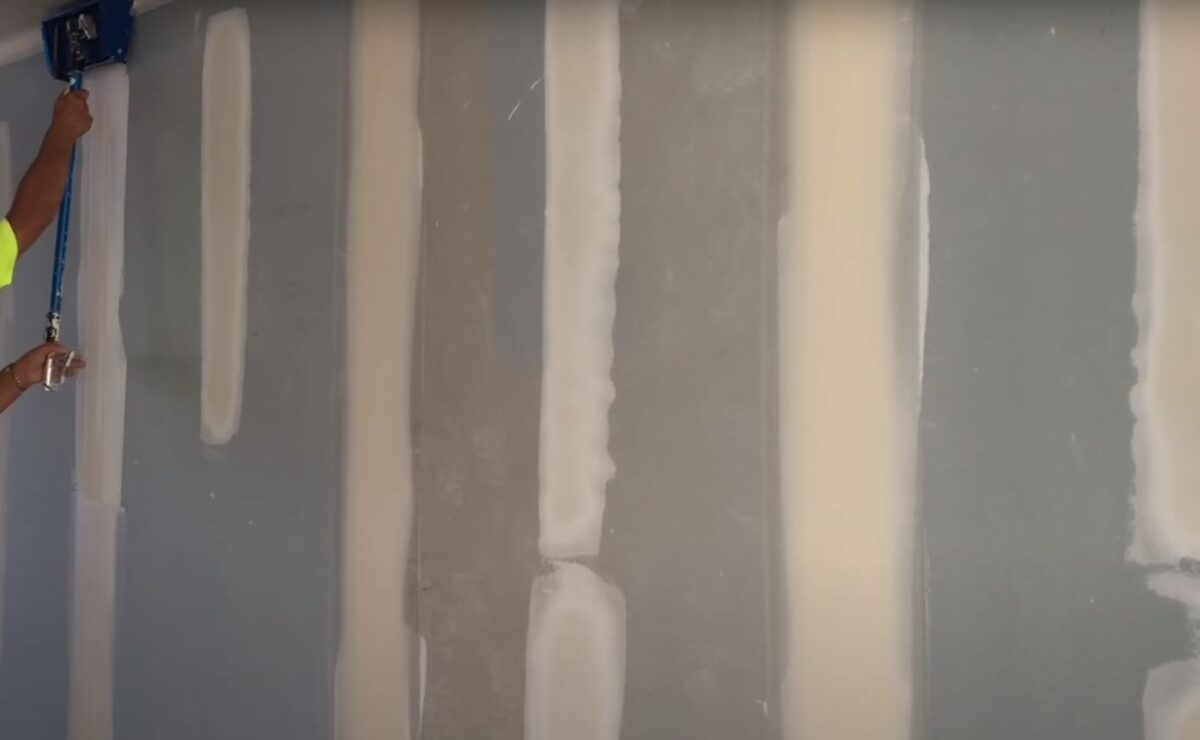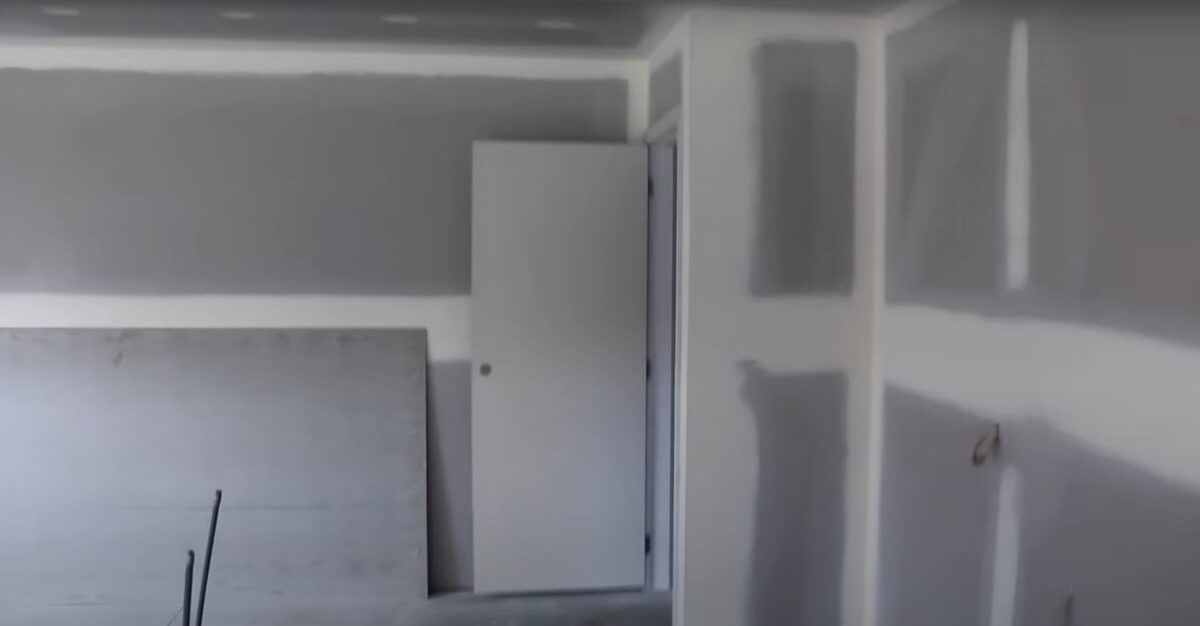The Impacts of Wet Gib
If your GIB board gets wet, it can spell trouble. Water compromises the integrity of the gypsum core, leading to softening and potential disintegration. Prolonged exposure to moisture can also lead to mould growth, posing health risks and further degrading the board’s quality. Hence, Auckland homeowners need to act swiftly when they spot wet GIB.
Factors Influencing GIB Drying Time:
Ambient Temperature
GIB drying is significantly influenced by the surrounding temperature. Just like how the sun dries our clothes faster on a hot day, GIB drying benefits from warmer temperatures. Cold days can make the drying process sluggish, especially in those Auckland winters, where the drop in temperature can be notable.
Humidity Levels
Moisture in the air is another paramount factor to consider. Auckland, with its maritime climate, often experiences high humidity levels. Suburbs like Ponsonby might occasionally witness more humidity due to their proximity to the coast. When the air is already laden with moisture, it has less capacity to absorb additional moisture from wet GIB. This makes the drying process more prolonged than in drier conditions.
Ventilation
A well-ventilated room can be the saviour for wet GIB. When there’s a continuous flow of air, moisture from the GIB is carried away faster, facilitating quicker drying. However, homes that are tightly sealed, especially some modern constructions keen on energy efficiency, might not have optimal airflow. In these cases, using fans or dehumidifiers can be beneficial.
Thickness of the GIB
Not all GIB boards are created equal. Thicker boards naturally take a longer time to dry out compared to their thinner counterparts. It’s essential to factor in the thickness when estimating drying time, especially for larger renovation projects.
Type of Joint Compound Used
Different joint compounds have varying drying times. While some compounds are designed to dry faster, others provide more working time before setting, which means they might take longer to dry fully. It’s crucial to choose the right compound based on the specific needs of your plastering project.
Previous Water Exposure
If a GIB board has been exposed to water multiple times or for prolonged periods, its drying time might increase. Repeated exposure can alter the gypsum’s structure, making it retain moisture more stubbornly. In such cases, it might be more prudent to replace the board rather than waiting for it to dry.
Understanding the multiple factors affecting GIB drying time is paramount, especially in Auckland’s unique climate and setting. This knowledge ensures that homeowners can make informed decisions, whether it’s about waiting for the GIB to dry or seeking the expertise of professional GIB stoppers in Auckland.
Auckland’s Unique Plastering Challenges
Plastering techniques may vary slightly based on Auckland’s unique geography. For instance, homes in Mount Eden, nestled by the volcanic cones, might experience different moisture levels than those closer to the coast. This means plasterers in different suburbs must adapt their tools and methods to the local conditions.
Gib Stopping Tools and Materials
Jointing Compounds
GIB stopping starts with jointing compounds, the backbone of the process. These compounds fill in the gaps and seams between GIB boards, ensuring a seamless finish. Auckland plasterers often have a range of these compounds on hand to cater to different project requirements:
-
- Ready-Mixed: Convenient for smaller projects, this compound comes pre-prepared.
- Setting-Type: These compounds harden by chemical reactions and are typically used for bigger projects where drying time can be controlled.
Trowels and Broadknives
The application of joint compounds requires precision, and that’s where trowels and broadknives come in:
-
- Trowels: These flat tools are pivotal for spreading compound smoothly over broader surfaces. Their shape allows for a more even pressure distribution, ensuring uniformity.
- Broadknives: Available in various widths, broadknives are essential for filling and smoothing the joints between GIB boards.
Sanding Tools
Once the joint compound is applied and dried, achieving a flawlessly smooth finish requires sanding:
-
- Hand Sanders: Ideal for smaller areas, these offer precision.
- Pole Sanders: For those hard-to-reach places, a pole sander provides the necessary extension without compromising on the finish.
- Sanding Sponges: These are perfect for corners and tighter spaces, allowing for a gentle and even sanding.
Corner Tools
Corners can be tricky, but with the right tools, they’re a breeze:
-
- Corner Trowels: Specifically designed for internal corners, these ensure a smooth and even application of the compound.
- Angle Boxes: These devices dispense joint compound directly into internal and external angles, streamlining the process.
Mixing Tools
For those compounds that aren’t pre-mixed, a good stir is crucial:
-
- Mixing Paddles: Attached to a power drill, these ensure a consistent mix of the joint compound.
- Mixing Tubs: A durable tub is essential for mixing your compounds, ensuring there are no lumps.
Utility Knives and Saws
Before the stopping begins, the GIB might need some adjustments:
-
- Utility Knives: Perfect for cutting and shaping GIB boards.
- Keyhole Saws: Ideal for making smaller cuts or holes in the GIB, especially for electrical outlets.
The world of GIB stopping is vast, and having the right tools and materials can make all the difference, especially in Auckland’s diverse housing landscape. Whether you’re looking to patch up a small area or renovate an entire room, understanding these tools is vital. However, mastering their use is a craft in itself, which is why many Aucklanders opt for the expertise of professional GIB stoppers to ensure a top-tier finish.
Local Council Bylaw Requirements
Before embarking on any gib stopping or fixing project, Aucklanders should familiarise themselves with the Auckland Council’s bylaws. For instance, certain regulations pertain to homes within heritage sites in some suburbs. Therefore, residents of places like Grey Lynn need to be especially cautious and might require permits before undergoing significant plastering changes. Always consult with your local council or a knowledgeable plasterer to stay compliant.
Why Engaging Professional Plasterers is Crucial
Gib stopping might seem straightforward, but it requires skill, especially when navigating the complexities of Auckland’s diverse suburbs and council regulations. Here’s why hiring professionals is the wise choice:
- Expertise: Professional plasterers have the experience to handle challenges unique to each project.
- Quality Finish: GIB stoppers Auckland residents can hire will ensure a seamless, smooth finish, enhancing your home’s aesthetic.
- Time-Efficiency: Trying to DIY might not only yield less than optimal results but also take more time. Auckland plasterers, given their expertise, will likely complete the job more quickly and effectively.
The Final Verdict on Wet Gib
Dealing with wet GIB isn’t merely about letting it dry. There’s a lot more at play, especially in a region as diverse as Auckland. From understanding the intricacies of local bylaws to employing the right tools for the job, it’s clear that plastering isn’t a one-size-fits-all task.
When it comes to gib stopping Auckland homeowners need a tailor-made approach. And that’s precisely what Plasterers Auckland brings to the table. With their understanding of local nuances, from Mount Eden’s unique environmental challenges to Grey Lynn’s heritage regulations, these experts can deliver impeccable results every time. So, for those looking to embark on a home renovation journey, it’s clear: engaging a GIB stopping/GIB fixing contractor is the way forward. After all, your home deserves nothing but the best!
Frequently Asked Questions on “What Happens If Gib Gets Wet?”
Why is wet GIB a concern?
When GIB becomes wet, it can lose its structural integrity. The gypsum core softens, leading to potential sagging, bulging, or complete disintegration. Furthermore, wet GIB can be a breeding ground for mould and mildew, which pose health risks and can degrade the board’s quality further.
How can I identify if my GIB is wet?
Apart from the obvious signs of water staining, wet GIB might feel soft to touch. Over time, you might also notice bubbling, warping, or even a musty smell indicative of mould growth.
Can I dry out the wet GIB, or should it be replaced?
It depends on the extent of the damage. If the GIB is slightly damp, it can often be dried out using fans or dehumidifiers. However, if it’s been soaked or has been wet for an extended period, replacement might be the safer option to prevent mould and structural issues.
How does Auckland’s climate impact GIB drying time?
Auckland’s maritime climate, characterised by high humidity, can prolong the drying time for wet GIB. Homes in certain suburbs, like Ponsonby, with proximity to the coast might experience even higher humidity levels.
Does insurance cover water-damaged GIB?
Most home insurance policies cover water damage, including to GIB, if it’s due to sudden and accidental events. However, gradual damage, like slow leaks, might not be covered. It’s essential to check your policy specifics and consult your insurance provider.
How can I prevent GIB from getting wet?
Regular home maintenance is crucial. Check for roof leaks, ensure adequate ventilation, especially in bathrooms and kitchens, and fix any plumbing issues promptly. For homes in moisture-prone areas of Auckland, like Mount Eden, investing in moisture barriers can be beneficial.
Is mould on GIB harmful?
Yes, mould can lead to various health issues, including allergies, respiratory problems, and more. It’s vital to address wet GIB promptly to prevent mould growth.
Can wet GIB affect my home’s electrical systems?
If the GIB houses electrical outlets or switches, water can potentially seep into these fixtures, leading to short circuits or even fires. Always consult an electrician if you suspect water damage near electrical installations.
Do professional plasterers in Auckland have solutions for wet GIB?
Absolutely! Plasterers Auckland and other expert GIB stoppers have the tools, materials, and expertise to address water-damaged GIB. They can assess the damage, offer solutions, and ensure that your walls are restored to their former glory.
How long does it take to fix water-damaged gib?
The timeframe varies based on the extent of damage and the solution chosen (drying vs. replacement). On average, drying might take a few days to a week, while replacement can span several days, especially if it includes GIB stopping and repainting. Consulting with Auckland plasterers will provide a more accurate estimate.
Tackling wet GIB can be challenging, especially given the potential repercussions of improper handling. Hence, for homeowners in Auckland, seeking the expertise of professional GIB stoppers is often the best course of action to ensure the longevity and safety of their homes.
Key Takeaways
- Structural Concerns: Wet GIB can compromise its structural integrity, causing sagging, bulging, or disintegration.
- Mould Growth: Damp GIB can become a breeding ground for mould and mildew, posing potential health risks.
- Identification: Signs of wet gib include water staining, softness to touch, bubbling, warping, or a musty smell.
- Drying vs Replacement: Slightly damp gib might be dried using fans or dehumidifiers. However, if extensively soaked or damp for long periods, replacement is often recommended.
- Auckland’s Climate: The high humidity in Auckland, especially in coastal suburbs like Ponsonby, can extend GIB drying times.
- Insurance: While many home insurance policies cover sudden water damage to gib, gradual damages might not be included.
- Prevention: Regular maintenance, checking for leaks, ensuring proper ventilation, and using moisture barriers in high-risk areas, like Mount Eden, can prevent GIB from getting wet.
- Electrical Risks: Wet gib can pose risks to electrical installations in the wall, leading to potential short circuits or fires.
- Professional Solutions: Expert GIB stoppers in Auckland can assess, advise, and remedy water-damaged gib efficiently.
- Timeframe for Fixes: The duration for fixing wet GIB varies but can range from a few days for drying to potentially over a week for full replacement and finishing.
Engaging with professionals, especially when dealing with the complexities of wet GIB, ensures both the structural and aesthetic integrity of Auckland homes.


